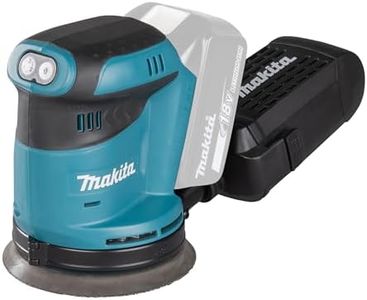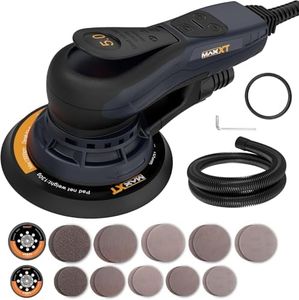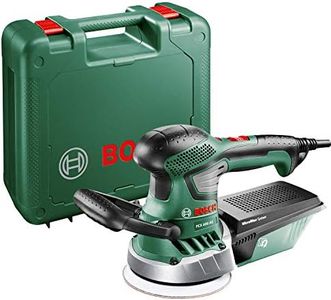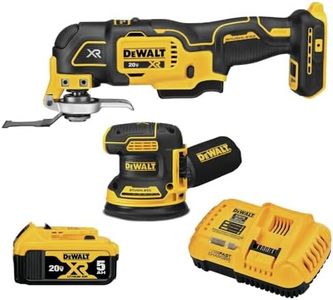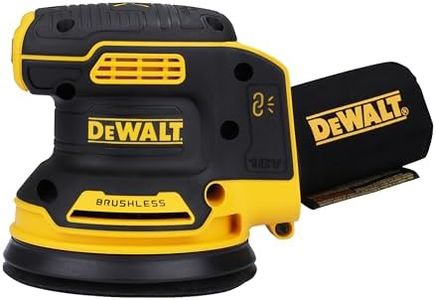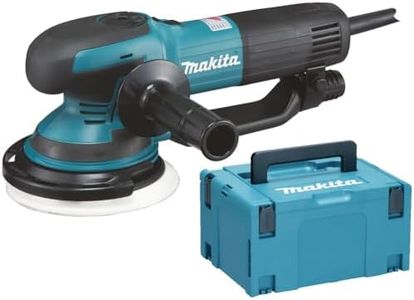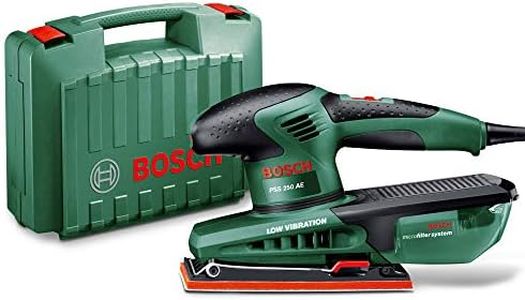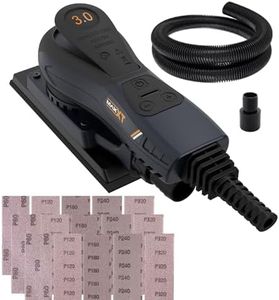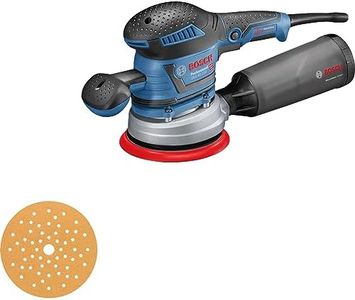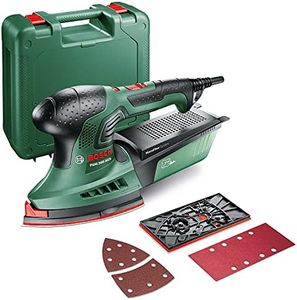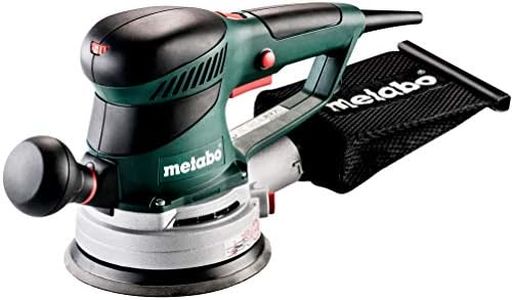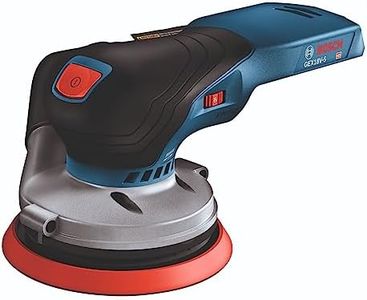We Use CookiesWe use cookies to enhance the security, performance,
functionality and for analytical and promotional activities. By continuing to browse this site you
are agreeing to our privacy policy
10 Best Orbital Sanders
From leading brands and best sellers available on the web.By clicking on a link to a third party's website, log data is shared with that third party.
Buying Guide for the Best Orbital Sanders
Choosing the right orbital sander means balancing power, control, comfort, and the ability to tackle your specific sanding tasks. Orbital sanders are great for smoothing wood, prepping surfaces for painting, and removing finishes. Your choice depends on what types of projects you do most, the materials you work with, and how often you plan to use the tool. Taking time to understand the main features makes it easier to find a sander that fits your hand, your work, and your expectations for results.Power (Motor Amperage or Wattage)Power, usually shown in amperage (amps) or wattage, tells you how strong and capable the sander's motor is. Higher power means the sander can handle tougher jobs and work for longer periods without bogging down. Light-duty sanders (around 2 amps or under 250 watts) are fine for general home projects, finishing, and smoothing softwoods. Medium-duty (2-3 amps or 250-350 watts) allows for broader use and some heavier sanding on hardwoods or paint removal. Heavy-duty sanders (over 3 amps or 350 watts) are best for larger surfaces, harder materials, or heavy paint/varnish removal. Choose a power level that matches the intensity of your usual projects: casual DIYers often don't need as much power as someone regularly refinishing furniture or working on renovations.
Sanding Pad SizeThe size of the sanding pad affects how much area you cover with each pass and how easy it is to control the tool. Common sizes are 5-inch and 6-inch pads. Smaller pads (5-inch) are more maneuverable and suitable for detail work or tight spaces, which is ideal for furniture or hobby projects. Larger pads (6-inch) cover more surface faster and are good for floors, big tables, or wide boards. Think about the type of things you usually sand—if you need precision and control, go smaller; for big, flat surfaces, go bigger.
Speed (OPM - Orbits Per Minute)The speed of an orbital sander is measured in orbits per minute (OPM), meaning how many times the pad rotates every minute. Some sanders offer a single, constant speed, while others have variable speed settings. Lower speeds (around 7,000-10,000 OPM) are gentler, which is good for delicate work or finishing. Higher speeds (up to 12,000-14,000 OPM) remove material faster, making them better for aggressive sanding like stripping paint. If you work with different materials or need both fine and heavy sanding, a variable speed sander lets you adjust to fit all jobs. For most users, flexibility is key.
Dust CollectionGood dust collection captures sanding dust, making your workspace cleaner and healthier. Some sanders use built-in dust bags, while others have ports to connect to a shop vacuum. Efficient dust collection is important if you're sanding indoors, working on large projects, or want the best visibility. If you work outside or only on small projects, dust control may matter less. Look for a system that's easy to empty or connect if dust is a concern for you.
Weight and ErgonomicsThe weight and shape of an orbital sander affect how comfortable it is to use, especially for a long time. Lightweight sanders (usually under 4 pounds) are easier to handle and cause less fatigue, great for overhead, vertical, or detailed work. Heavier sanders can feel more steady on flat surfaces but may be tiring to use on walls or small areas. The grip should feel comfortable in your hand and allow for good control. Test how the sander feels before buying, or check if others find it comfortable for the kind of work you plan to do.
Pad Attachment (Hook-and-Loop vs. Adhesive)Pad attachment refers to how sanding paper is held on the tool. Hook-and-loop (like Velcro) systems let you quickly swap out sandpaper, which is convenient if you change grits often during a project. Adhesive-backed pads stick directly and may hold more firmly, but changing them is slower and can be messier. If you switch tasks or sandpapers regularly, hook-and-loop is best. For simple, single-grit projects, adhesive pads are fine.
